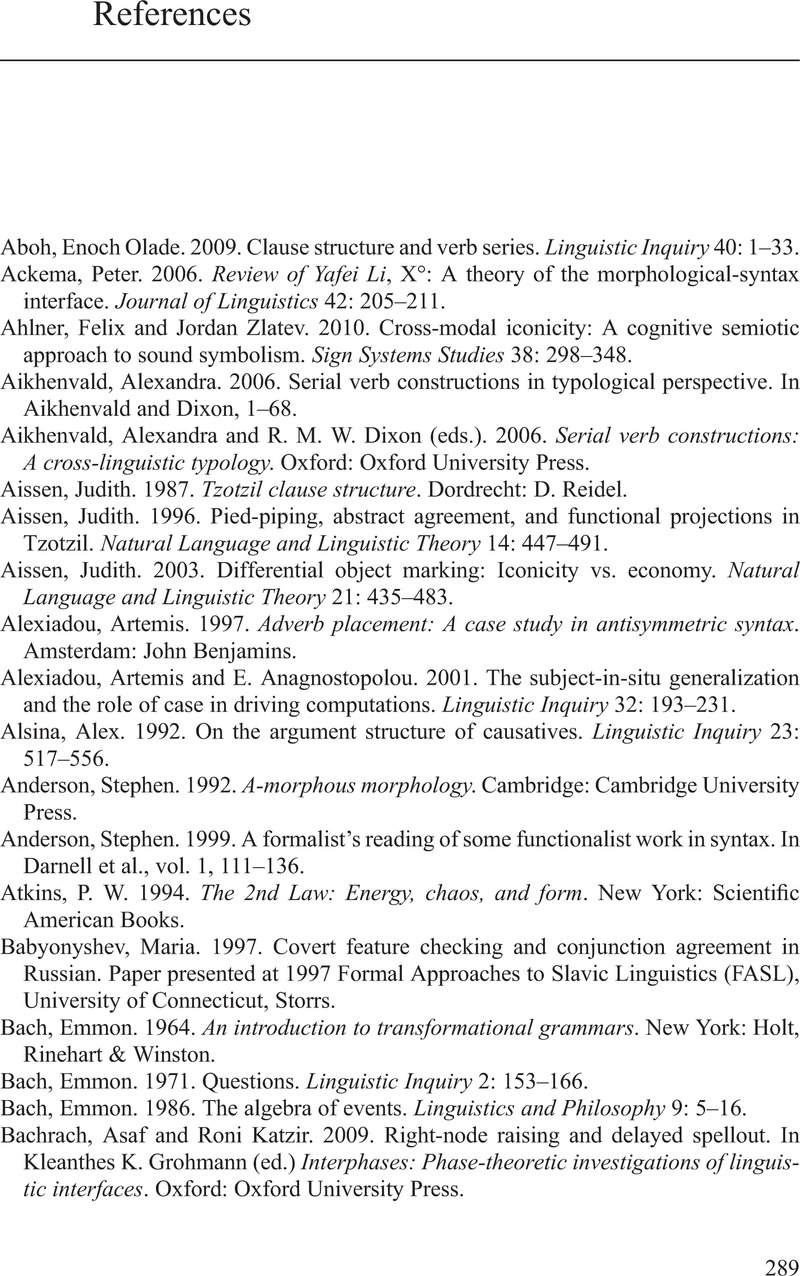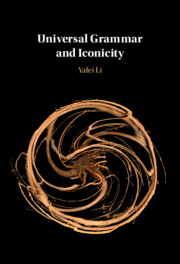Book contents
- Universal Grammar and Iconicity
- Universal Grammar and Iconicity
- Copyright page
- Dedication
- Contents
- Figures
- Preface
- Acknowledgments
- Abbreviations
- Chapter 1 An Interface Theory of Universal Grammar and Iconicity
- Chapter 2 The Serial Verb Constructions
- Chapter 3 The Connectors
- Chapter 4 From the External Argument Onward
- Chapter 5 Meta-Theoretical Reflections
- Notes
- References
- Index
- References
References
Published online by Cambridge University Press: 03 February 2022
- Universal Grammar and Iconicity
- Universal Grammar and Iconicity
- Copyright page
- Dedication
- Contents
- Figures
- Preface
- Acknowledgments
- Abbreviations
- Chapter 1 An Interface Theory of Universal Grammar and Iconicity
- Chapter 2 The Serial Verb Constructions
- Chapter 3 The Connectors
- Chapter 4 From the External Argument Onward
- Chapter 5 Meta-Theoretical Reflections
- Notes
- References
- Index
- References
Summary

- Type
- Chapter
- Information
- Universal Grammar and Iconicity , pp. 289 - 304Publisher: Cambridge University PressPrint publication year: 2022

